Insect Architecture
Introduction
Insects, a class of arthropods, are known for their complex and diverse architectural abilities. They construct a variety of structures, including nests, hives, mounds, and webs, using materials available in their environment. These structures serve various purposes such as protection, reproduction, and food storage. The intricate designs and robustness of these structures have inspired human architecture and engineering.
Types of Insect Architecture
Insect architecture can be broadly categorized into three types: nests, mounds, and webs. Each type serves a specific purpose and is built using unique construction techniques.
Nests
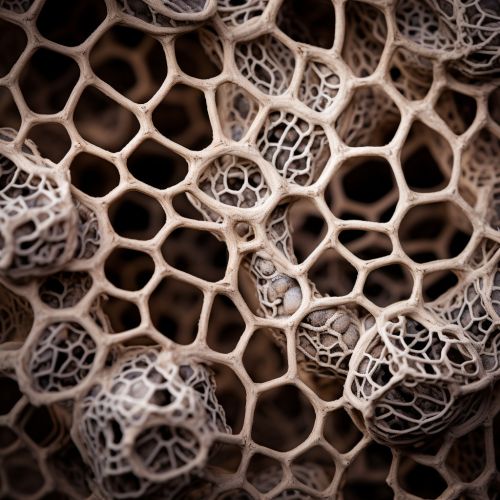
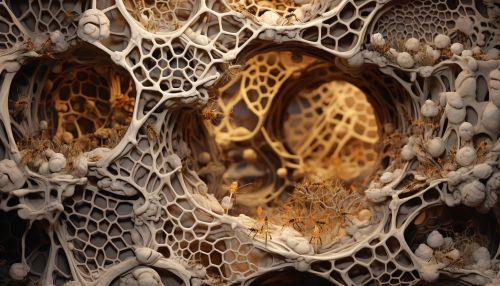
Nests are common among social insects like ants, bees, and wasps. They are often complex structures with multiple chambers and tunnels, serving as a colony's home. Nests protect the colony from predators and harsh weather conditions, and provide a place for food storage and reproduction.
Ant Nests
Ant nests, also known as formicaries, are underground structures with a complex network of galleries and chambers. The construction of an ant nest begins with the queen ant, who digs a small chamber to lay her eggs. As the colony grows, worker ants expand the nest by digging additional chambers and tunnels. The nest's structure is designed to maintain a constant temperature and humidity, ensuring the survival of the colony.
Bee Hives
Bee hives are constructed by honey bees using beeswax, a substance secreted by the bees. The hive consists of a series of hexagonal cells, known as a honeycomb, which is used for storing honey and housing the brood (eggs, larvae, and pupae). The hexagonal design of the honeycomb is efficient in terms of material usage and space, and provides structural stability to the hive.
Wasp Nests
Wasp nests are made from a paper-like substance produced by the wasps. The wasps chew wood fibers, mix them with their saliva, and form it into a pulp, which is then used to construct the nest. The nest consists of multiple tiers of cells, each housing a single wasp larva. The cells are covered with a thin layer of pulp, providing protection to the developing larvae.
Mounds
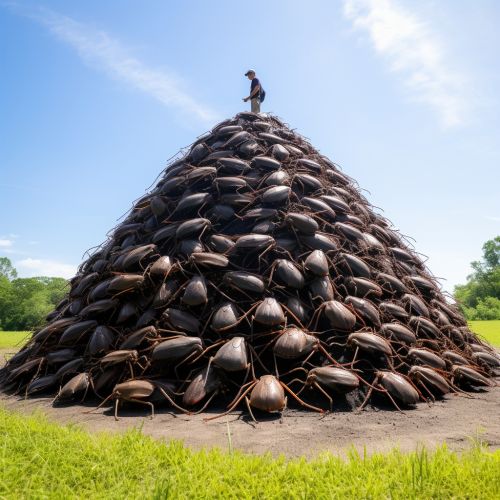
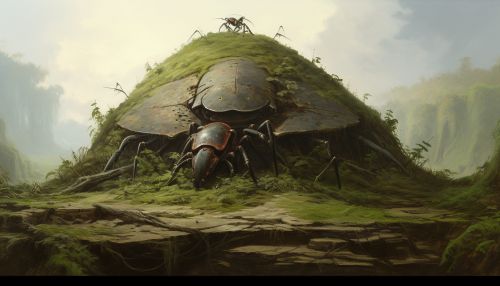
Mounds are built by certain species of ants and termites. They are large, above-ground structures that can reach several meters in height. Mounds serve as an extension of the underground nest, providing additional living space for the colony. They also play a crucial role in temperature and humidity regulation.
Ant Mounds
Ant mounds, also known as anthills, are constructed by certain species of ants. The mound is built from soil and plant material excavated from the underground nest. The mound's structure allows for efficient air circulation, helping to regulate the nest's temperature and humidity.
Termite Mounds
Termite mounds are among the most impressive examples of insect architecture. They are built from soil, saliva, and feces, and can reach up to 9 meters in height. The mound's complex internal structure, which includes a network of tunnels and vents, helps to maintain a stable temperature and humidity within the nest.
Webs
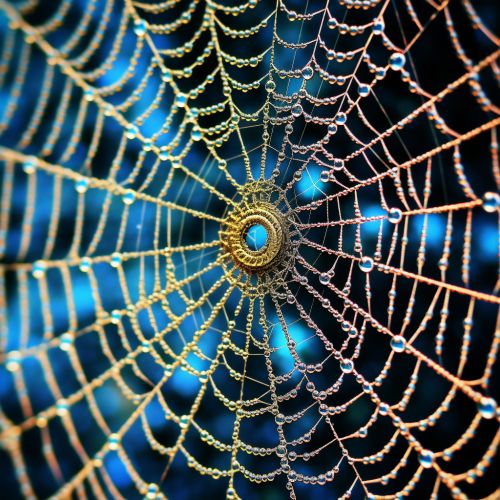

Webs are constructed by spiders, a class of arachnids. They are made from silk, a protein fiber produced by the spider. Webs serve as a hunting tool, allowing the spider to capture its prey.
Construction Techniques
Insects employ various techniques to construct their structures. These techniques often involve teamwork, with each member of the colony performing a specific task.
Self-Assembly
Self-assembly is a common technique used by insects, particularly ants and bees. It involves individual insects working together to construct a structure, with each insect contributing a small part to the overall design. This technique allows for the construction of complex structures without the need for a central coordinator or blueprint.
Stigmergy
Stigmergy is a mechanism of indirect coordination used by insects, particularly termites. It involves insects modifying their environment and responding to the modifications made by other insects. This allows for the coordination of large-scale construction projects without the need for direct communication between insects.
Silk Spinning
Silk spinning is a technique used by spiders to construct their webs. The spider produces silk from its spinnerets, a set of glands located at the rear of its body. The silk is then spun into a thread, which is used to construct the web.
Implications for Human Architecture and Engineering
The study of insect architecture has implications for human architecture and engineering. The efficiency, robustness, and adaptability of insect structures can inspire new design principles and construction techniques. For example, the self-assembly techniques used by ants and bees can inform the development of swarm robotics, a field of robotics that involves the coordination of multiple robots to perform a task. Similarly, the temperature regulation mechanisms of termite mounds can inspire the design of energy-efficient buildings.
See Also
References
1. Turner, J.S. (2000). The Extended Organism: The Physiology of Animal-Built Structures. Harvard University Press. 2. Bonabeau, E., Dorigo, M., & Theraulaz, G. (1999). Swarm Intelligence: From Natural to Artificial Systems. Oxford University Press. 3. Grasse, P.P. (1959). La reconstruction du nid et les coordinations inter-individuelles chez Bellicositermes natalensis et Cubitermes sp. La theorie de la stigmergie: Essai d'interpretation du comportement des termites constructeurs. Insectes Sociaux, 6, 41-81.
